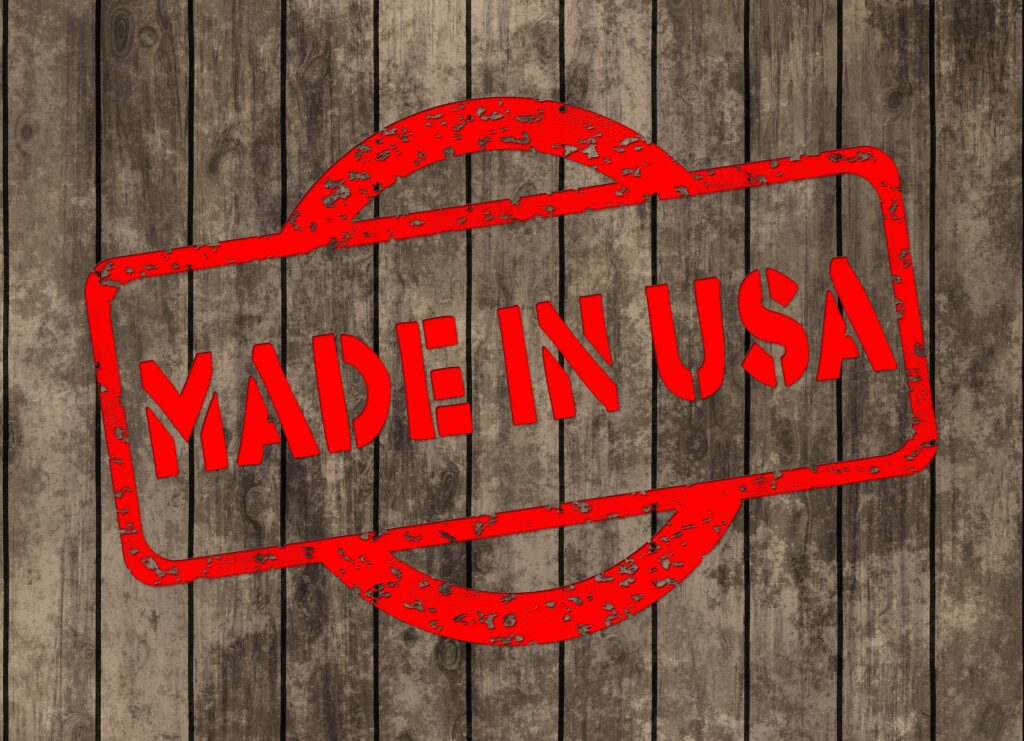What is a “Made in the USA” claim?
- A voluntary statement intended to emphasize a product’s American content
- A marketing claim, not a regulatory requirement
- A label distinct from Country of Origin Marking
Our goal is to separate Country of Origin Marking from the claim of Made in USA.
Some background (The Murky Waters)
U.S. Customs and Border Protection (CBP) requires every article of foreign origin to be marked with its country of origin. This general rule is also true for just about every other country in the world.
Marking is not required under CBP rules for articles made in the U.S. exclusively from U.S.-origin components or articles where foreign content is “substantially transformed” by processing in the U.S.
There are important notes in regards to “substantial transformation:”
First, “substantial transformation” is a concept associated only with Country of Origin Marking requirements.
Second, “substantial transformation” does not convert a product into a “Product of the USA” for the purpose of a “Made in the USA” claim.
Caution! In the 2016 Court of International Trade (CIT) ruling Energizer Battery, Inc. v. United States, the court held that mere assembly of foreign component parts does not constitute substantial transformation and the resulting product cannot be considered to be of U.S. origin. While the court considered a number of factors relied on by Customs, the decision noted that “whether there has been a substantial transformation depends on whether there has been a change in the name or use of the components.” However, the court focused not on “whether the components as imported have the form and function of the final product” but rather “whether the components have a pre-determined use at the time of importation.” Here, the court found that because the imported Chinese parts had a pre-determined usage at the time of import, their fulfillment of that end use through assembly could not constitute substantial transformation.
Third, U.S. origin does not necessarily mean “Made in USA.” Whether an article may be marked with the phrase “Made in USA” or similar words denoting U.S. origin is an issue under the authority of the Federal Trade Commission (FTC). While CBP rules confer U.S.-origin status, it is ultimately the FTC that controls the use of the phrase “Made in the USA.”
The FTC requirements go beyond marking of the product itself, or its container, but extend to the use of “Made in USA” claims or their deemed equivalents in advertising materials, brochures and websites.
“Assembled in USA” is a common but distinct form of qualified U.S.-origin claim. Unlike other qualified U.S.-origin claims, however, an “Assembled in USA” claim permits the marketer to link its product with the U.S. without referring to any foreign content, even when the product components may be sourced from abroad. This claim, however, requires that the product have undergone its last substantial transformation in the U.S. and its principal assembly here. Unfortunately, this statement is not an acceptable Country of Origin Mark.
The U.S. Commercial Service offers considerations for exporters on labeling of goods for overseas buyers in their “A Basic Guide to Exporting” publication excerpted https://www.export.gov/article?id=Labeling, where they advise exporters to mark packages with the country of origin.
About the Wisconsin Go Global Initiative:
The Wisconsin Go Global Initiative is part of the Wisconsin Small Business Development Center (SBDC) Network, hosted by the Institute for Business & Entrepreneurship in the University of Wisconsin System.
It is funded in part through a Cooperative Agreement with the U.S. Small Business Administration.
Reasonable accommodations for persons with disabilities will be made if requested at least two weeks in advance. Contact the relevant SBDC office or call 608-263-7794.

